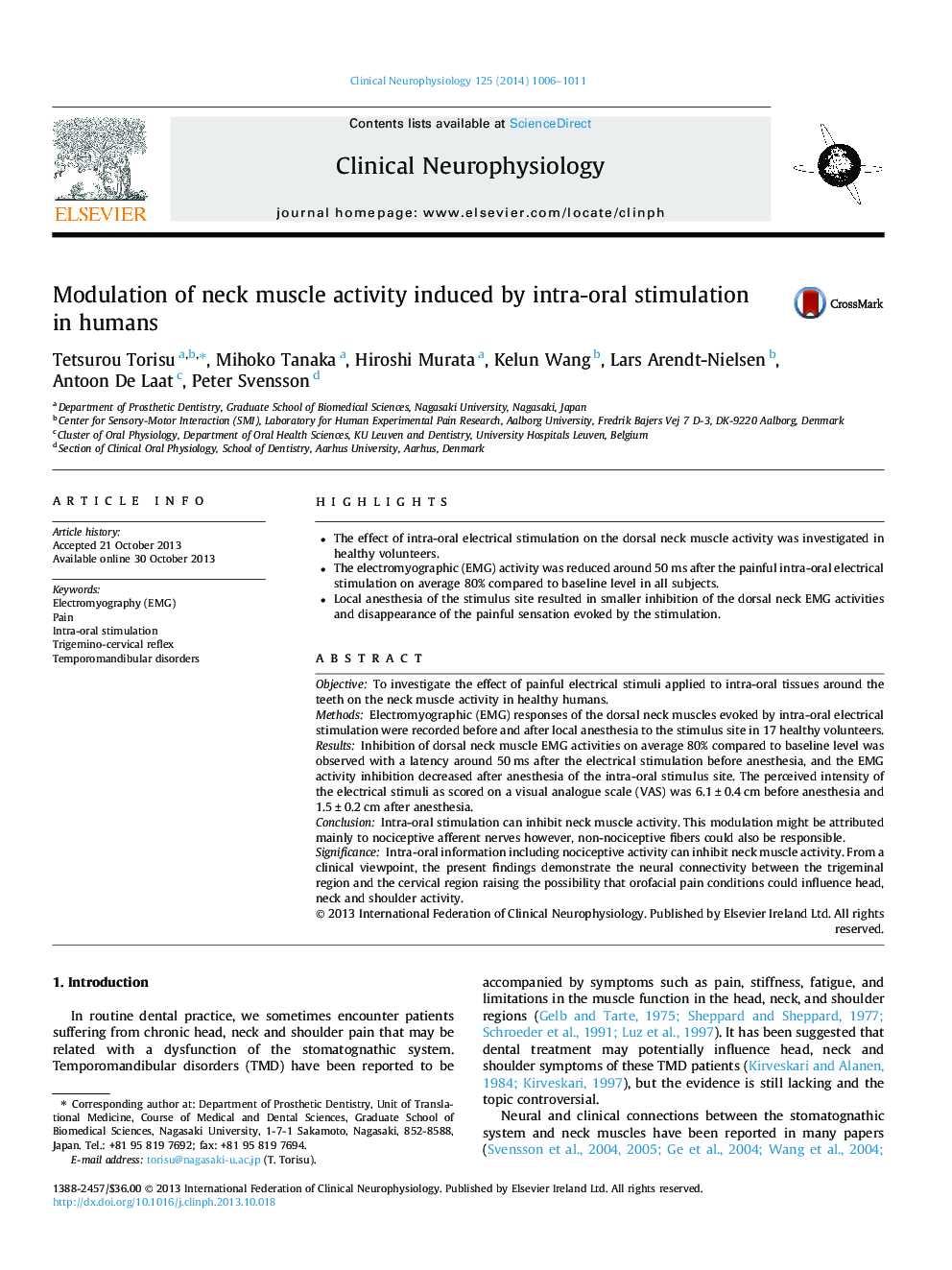| Article ID | Journal | Published Year | Pages | File Type |
|---|---|---|---|---|
| 3044085 | Clinical Neurophysiology | 2014 | 6 Pages |
•The effect of intra-oral electrical stimulation on the dorsal neck muscle activity was investigated in healthy volunteers.•The electromyographic (EMG) activity was reduced around 50 ms after the painful intra-oral electrical stimulation on average 80% compared to baseline level in all subjects.•Local anesthesia of the stimulus site resulted in smaller inhibition of the dorsal neck EMG activities and disappearance of the painful sensation evoked by the stimulation.
ObjectiveTo investigate the effect of painful electrical stimuli applied to intra-oral tissues around the teeth on the neck muscle activity in healthy humans.MethodsElectromyographic (EMG) responses of the dorsal neck muscles evoked by intra-oral electrical stimulation were recorded before and after local anesthesia to the stimulus site in 17 healthy volunteers.ResultsInhibition of dorsal neck muscle EMG activities on average 80% compared to baseline level was observed with a latency around 50 ms after the electrical stimulation before anesthesia, and the EMG activity inhibition decreased after anesthesia of the intra-oral stimulus site. The perceived intensity of the electrical stimuli as scored on a visual analogue scale (VAS) was 6.1 ± 0.4 cm before anesthesia and 1.5 ± 0.2 cm after anesthesia.ConclusionIntra-oral stimulation can inhibit neck muscle activity. This modulation might be attributed mainly to nociceptive afferent nerves however, non-nociceptive fibers could also be responsible.SignificanceIntra-oral information including nociceptive activity can inhibit neck muscle activity. From a clinical viewpoint, the present findings demonstrate the neural connectivity between the trigeminal region and the cervical region raising the possibility that orofacial pain conditions could influence head, neck and shoulder activity.
